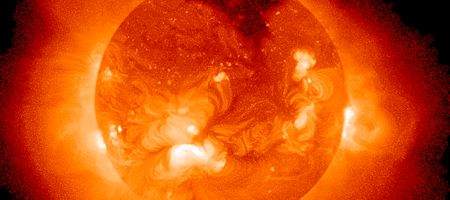Our sun and its inner planets may not have formed from the same materials, as previously thought, samples returned by NASA’s Genesis mission indicate.

The data shows slight differences in the types of oxygen and nitrogen present on the sun and planets.
The air on Earth contains three different kinds of oxygen atoms. While the vast majority of oxygen atoms in the solar system are composed of O-16, there also are tiny amounts of O-17 and O-18.
But the new data shows that the percentage of O-16 in the sun is slightly higher than on Earth, the moon, and meteorites. The other isotopes’ percentages were slightly lower.
“The implication is that we did not form out of the same solar nebula materials that created the sun – just how and why remains to be discovered,” says Kevin McKeegan, a Genesis co-investigator from the University of California, Los Angeles.
And there are also differences in the amount of nitrogen on the sun and planets. Like oxygen, nitrogen has one isotope, N-14, that makes up nearly 100 percent of the atoms in the solar system, but there also is a tiny amount of N-15. Researchers studying the same samples saw that when compared to Earth’s atmosphere, nitrogen in the sun and Jupiter has slightly more N-14, but 40 percent less N-15. Both the sun and Jupiter appear to have the same nitrogen composition.
“These findings show that all solar system objects, including the terrestrial planets, meteorites and comets, are anomalous compared to the initial composition of the nebula from which the solar system formed,” says Bernard Marty, a Genesis co-investigator from Centre de Recherches Petrographiques et Geochimiques in Nancy, France.
“Understanding the cause of such a heterogeneity will impact our view on the formation of the solar system.”
Genesis launched in August 2000, traveling to Earth’s L1 Lagrange Point about a million miles from Earth. There, it remained for 886 days between 2001 and 2004, passively collecting solar-wind samples.
This solar wind can be seen as a fossil of our nebula, as the outer layer of our sun is believed to have remained unchanged for billions of years.






